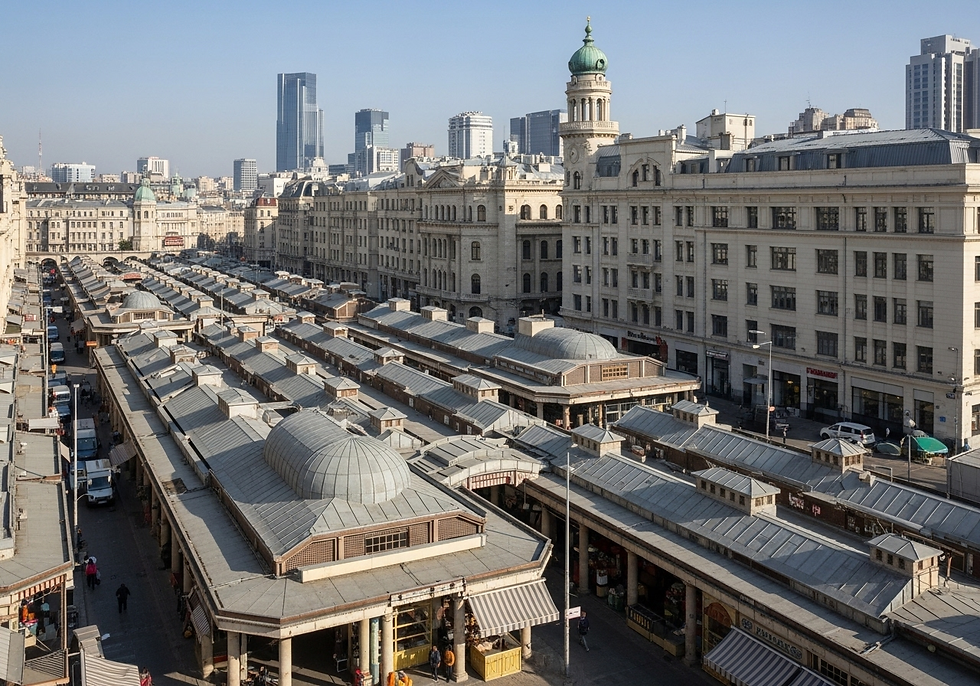The Impact of Copy-Paste Architecture on global architecture
- Dennis Asis

- Oct 2
- 4 min read

In an age where global connections are stronger than ever, copy-paste architecture is transforming our urban landscapes. From the shimmering skyscrapers of New York to the lavish shopping malls of Dubai, cities worldwide are adopting strikingly similar architectural styles. While this trend may streamline construction and create a sense of familiarity, it poses significant challenges to local culture and identity. Are unique urban identities disappearing in favor of a bland, global aesthetic?

The Rise of Global Architecture
Copy-paste architecture refers to replicating architectural styles across various cities and countries. This phenomenon is driven by globalization, advancements in technology, and the influence of multinational corporations. Cities vie for visitors and investors, often opting for designs that resonate with a global audience, rather than those that reflect their unique characteristics.
For example, over one-third of new buildings in major global cities emulate designs from just a handful of influential architectural firms. The return on investment is often prioritized, leading to a rise in glass skyscrapers, luxury hotels, and expansive shopping centers that focus more on functionality than cultural significance. Without careful consideration, this trend can result in the loss of local character that once defined these spaces.

Cultural Identity at Risk
One major concern about copy-paste architecture is its impact on cultural identity. Cities possess distinct histories and architectural styles that tell their unique stories. When local designs are replaced with generic structures, the fabric of what makes each place special begins to unravel.
Take traditional markets, for instance. These vibrant hubs of culture are often replaced by modern shopping malls. While malls may provide convenience, they lack the history and community feel of local markets. Statistics show that communities with lively market spaces report higher levels of social cohesion and a stronger sense of belonging. When these markets disappear, locals often feel a disconnection from their roots, contributing to a more homogenized urban experience.

The Role of Technology
Technology significantly contributes to the growth of copy-paste architecture. With cutting-edge design software and building techniques, architects can easily duplicate successful designs across various locations. This efficiency is appealing to developers and city planners focused on cost and speed.
However, this dependence on technology may stifle true creativity. Instead of drawing inspiration from local culture and traditions, many architects opt for familiar templates devoid of originality. For example, according to a recent survey, around 62% of architects admit to relying on similar design aesthetics, particularly in large commercial projects. This trend raises concerns about the future of architecture and our ability to meet the unique needs of diverse communities.

The Economic Argument
Supporters of copy-paste architecture often claim it can stimulate economic growth. By creating recognizable landmarks, cities can attract visitors and investment. For example, cities like Las Vegas and Dubai have utilized iconic architecture to establish themselves as global destinations. The Las Vegas Strip generates billions annually, thanks in part to its eye-catching designs.
Nonetheless, while economic benefits are undeniable, it is vital to consider the implications of prioritizing profit over cultural identity. Cities must find a middle ground that allows for growth while preserving their distinct heritage. For instance, cities like Barcelona have implemented regulations to protect their architectural history, ensuring that new developments complement the existing fabric.
Case Studies: Cities in Transition
Cities around the globe illustrate the challenges and opportunities presented by copy-paste architecture.
Dubai: A City of Contrasts
Dubai is often highlighted as a leading example of copy-paste architecture. The skyline is dotted with skyscrapers and luxury buildings inspired by global trends, transforming it into a modern oasis. However, this rapid development raises concerns about the erosion of traditional Emirati culture.
For instance, the iconic Burj Khalifa symbolizes Dubai's ambition and modernity. Yet, surrounding developments often lack the rich cultural context characteristic of the region, leaving some residents feeling disconnected from their heritage.
Paris: A Blend of Old and New
In contrast, Paris has managed to retain its cultural identity while welcoming modern designs. Known for its historic architecture, Paris also embraces contemporary styles that enhance its aesthetic. The Louvre Pyramid, designed by I.M. Pei, exemplifies how new architecture can harmonize with traditional structures and contribute to the city's character.
Paris shows that it is indeed possible to innovate while honoring cultural heritage. This balance is crucial for cities aiming to overcome the challenges of globalization while preserving their unique identities.

A Vision for the Future
As urban environments evolve, prioritizing cultural identity in architectural design is essential. Urban planners and architects must engage with local communities to grasp their needs and aspirations. By incorporating local materials, styles, and traditions, cities can construct spaces that genuinely embody their unique identities.
Moreover, education is vital in fostering appreciation for cultural heritage. Raising awareness about the importance of safeguarding local architecture can empower communities to advocate for designs that respect their history.

Reflecting on Our Architectural Future
The rise of copy-paste architecture presents both challenges and opportunities for global cultural identity. While efficiency and economic growth are advantages, they risk erasing the unique attributes that differentiate cities. As we look ahead, it is crucial to achieve a balance between modern progress and traditional values, ensuring that architectural practices celebrate and honor cultural heritage.
By prioritizing the distinct identities of urban environments, cities can foster a sense of belonging for their residents. In a world leaning toward uniformity, preserving cultural identity through thoughtful architecture is more crucial than ever. Embracing uniqueness can help us ensure that the future of architecture represents the rich tapestry of human experience.
Head over to our Resource Section for more insights and useful references.




Comments